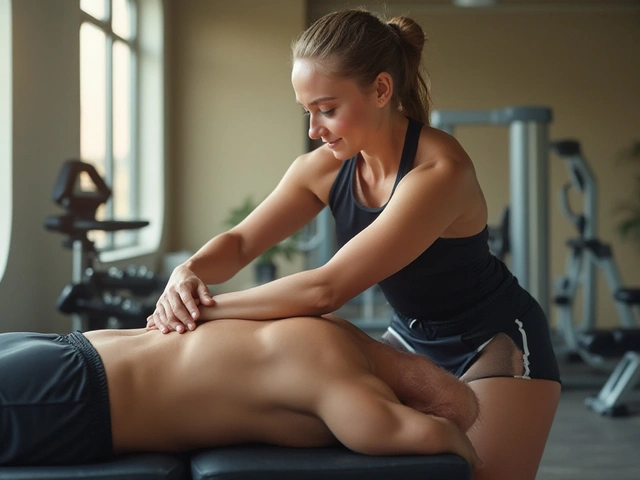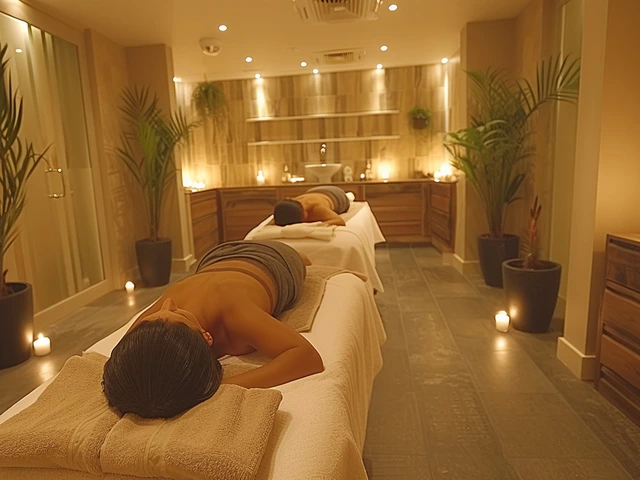Healing Bodywork: Practical Therapies That Help Dogs and People Recover
Healing bodywork is any hands-on or body-focused therapy that eases pain, speeds recovery, and calms the nervous system. That covers sports massage, neuromuscular work, myofascial release, Ayurvedic massage, and gentler approaches like Reiki or aromatherapy. Some tools, like biofeedback, add tech to the mix. Many of these methods also translate well to dogs—especially massage styles that focus on circulation, tension release, and comfort.
Each therapy has a clear purpose. Sports massage targets tight muscles and recovery after activity. Neuromuscular massage focuses on trigger points that lock up and cause chronic pain. Myofascial release loosens tight connective tissue that limits movement. Ayurvedic and Esalen-style massages aim to balance energy and promote deep relaxation. Reiki and light energy work add non-invasive calming that often pairs well with touch-based sessions. Knowing the goal helps you pick the right approach.
How to choose a therapist or session
Start with credentials and experience for the issue you have. For athletic injuries, look for sports or clinical massage training. For chronic tightness, search for certifications in myofascial release or neuromuscular techniques. If you’re working with a dog, ask for canine massage credentials and references. Always clear painful conditions with a doctor or vet first. Book a short trial session to see how you and your animal respond—many pros offer a 20–30 minute intro.
Watch these signs during a session: breathing becomes slower, movement range improves, and pain behaviors decrease. For dogs, relaxed body posture, tail wagging, and gentle licking are good signs. If you see sharp pain, sudden avoidance, or increased anxiety, stop and check with the provider or vet.
Simple, useful techniques you can try at home
You don’t need fancy tools. For people: start with slow, even strokes toward the heart to boost circulation. Spend 3–5 minutes on sore areas, then follow with gentle range-of-motion movements. Use steady pressure—too hard creates guarding.
For dogs: long, slow strokes along the back and sides help circulation and calm nerves. Keep sessions short—5–10 minutes is enough at first. Avoid deep pressure on unfamiliar spots. Use warm hands and a calm voice. Afterward, offer water and a quiet place to rest.
Other practical tips: hydrate before and after, do bodywork 1–2 times a week during recovery, and combine with light movement or stretching. Add aromatherapy for relaxation—lavender is often a safe choice—but test sensitivity first. Consider biofeedback or breathing exercises to speed nervous-system recovery when pain is linked to stress.
If you see swelling, fever, sudden lameness, or worsening pain, stop and get professional care. Healing bodywork helps a lot, but it should be part of a broader plan—medical checkups, proper rest, and smart exercise. Try one targeted session, watch for measurable changes, and build from there.

Discover the Hawaiian Healing Touch: Lomi Lomi Massage and the Art of Relaxation
Hey everyone! Ever heard of Lomi Lomi massage? It's this amazing traditional Hawaiian secret that's all about helping you unwind and feel fantastic! I've been diving deep into the world of relaxation, and I gotta tell you, there's something really special about Lomi Lomi. It's not just a regular rubdown; it's more of a spiritual journey that brings your body and mind into harmony. Imagine gentle waves rolling over you, easing all the tension away—that's what this massage is like. I'm stoked to share my experience and insights with you all about this unique healing practice!




